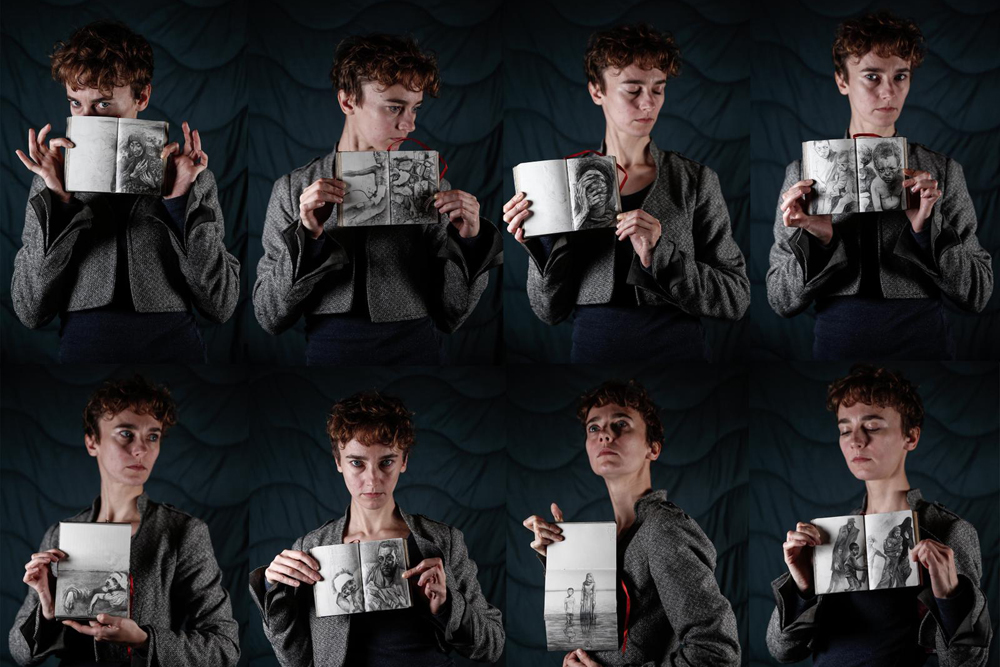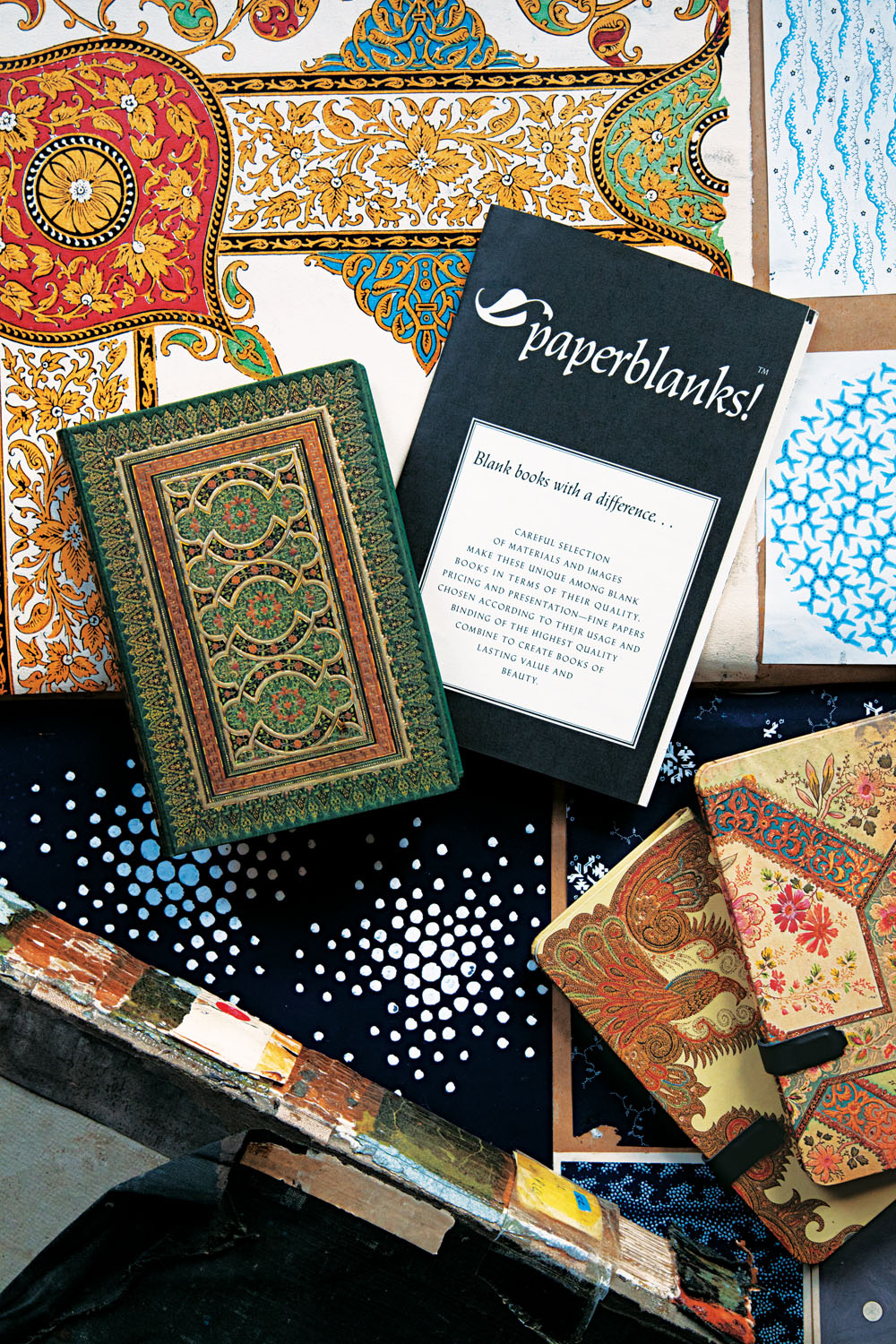Every year on Giving Tuesday, we profile a charity, organization or cause that is helping to make the world a better place. This year, we have connected with Maria de Gier about her project called #DrawForPeace.
Check out our interview with Maria to learn how she’s connecting art, storytelling and peace activism, and how you can help get involved.
Please tell us a little bit about yourself.
My name is Maria de Gier (b. 1986), and I am an artist and writer. I do etching, drawing, painting, photography and film. I write stories and poetry. I started at a very young age and just never stopped. In 2009 I got my Master of Fine Arts degree (illustration and comic book drawing). My work has been featured in group and solo exhibitions in galleries, and my videos shown at several festivals. In my work I like to focus on the human body and psyche. Beauty, fragility, nature and melancholy are recurring themes in my art.
I am collaborating with my friend Abdulmonam Eassa (b. 1995) who is a self-taught photographer. Until early 2018 he lived in an area called Eastern Ghouta which is located in Syria. Abdul started photographing in 2013 and his career as a freelance photojournalist for Agency France-Press began in 2015. During the five years that he lived under siege, over one thousand of his photos were published by AFP. His pictures have appeared in the New York Times, the Guardian, the Washington Post and Time, among others. After fleeing to Istanbul, he was able to come to live in Paris in October 2018. He received several prizes and honors for his photography, like the Humanitarian Visa d’or Award in 2019 for his “The Unhoped-for End to the Siege.”
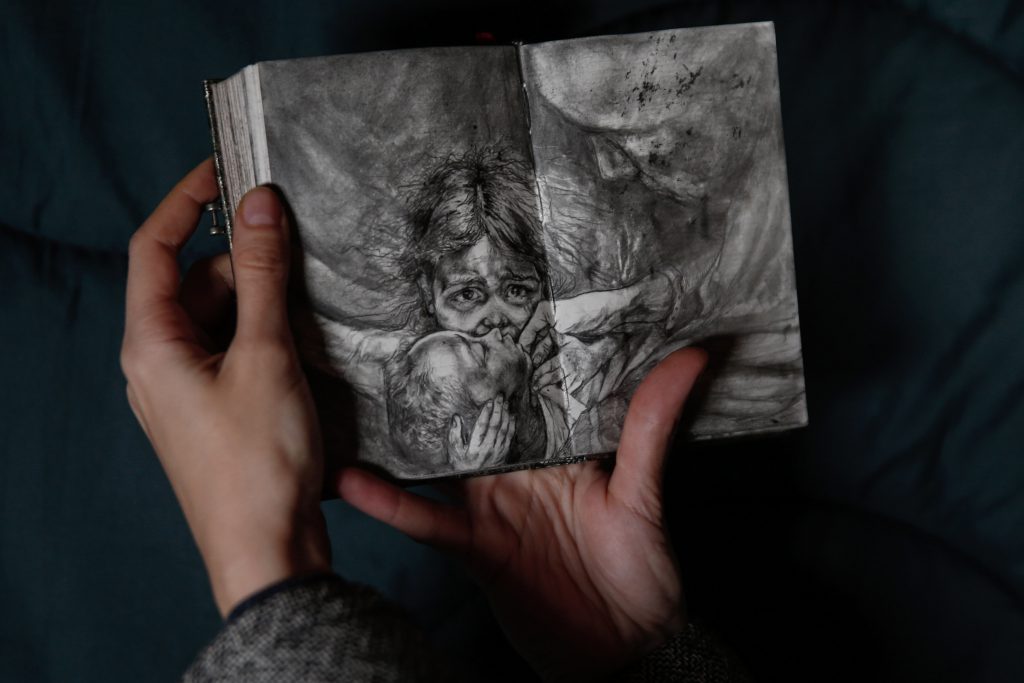
We first became aware of your art and #DrawForPeace project when we shared one of your works as part of our #PeopleOfPaperblanks series. For those who are not aware of the project, can you tell us what #DrawForPeace is?
#drawforpeace is an artistic protest against war, focused mainly on Syria. The idea is to make a drawing every day.
How and why did you first start an art project like this?
I started #drawforpeace shortly after the intense attacks on East Ghouta in February 2018, when I read a news article. I intended to make a drawing every day in my little Paperblanks notebook until there was a ceasefire. The ceasefire came but was violated, so I kept on drawing…
Like many, I always feel like I am incapable of doing anything in the face of all the injustice of the world. When I learned about Eastern Ghouta, how the people and children of that area were trapped and bombarded, one thing struck me especially: a person saying “The world has forgotten about us.” This made me feel more powerless than ever. I wanted to give an answer to this person and to all who were caught in that war for so many years. And to all who felt lost the same way. I wanted to tell them: “I am thinking of you.”

Do you think you accomplished this?
I believe a drawing is like a tangible thought. It takes time, dedication and concentration and creates an emotional connection with the subject, too. While drawing, I come as close as I can be.
How did #drawforpeace evolve?
Initially I just made the drawings for myself, but as it progressed I felt it would be important to have other people feel a connection too.
By seeing my drawing every day they would dedicate a small moment of their time to thinking about the matter. I encouraged other artists to use the hashtag and saw it grow.
My project of #drawforpeace might seem such a small thing but I truly want to believe that “Art can change the world.”
We heard you stopped making a drawing every day. Why?
I filled two notebooks and while I could have continued drawing until this day, since the war is still so mercilessly raging on, I came to believe I had to find another, more effective way to move forward.
Many options passed my thoughts but it was only when I met Abdulmonam Eassa that a real idea presented itself.
For my drawings I mainly used still images from videos and news images by photographers. I always tried to give credit to the photojournalists whom I took inspiration from. This is how I came in contact with Abdulmonam.
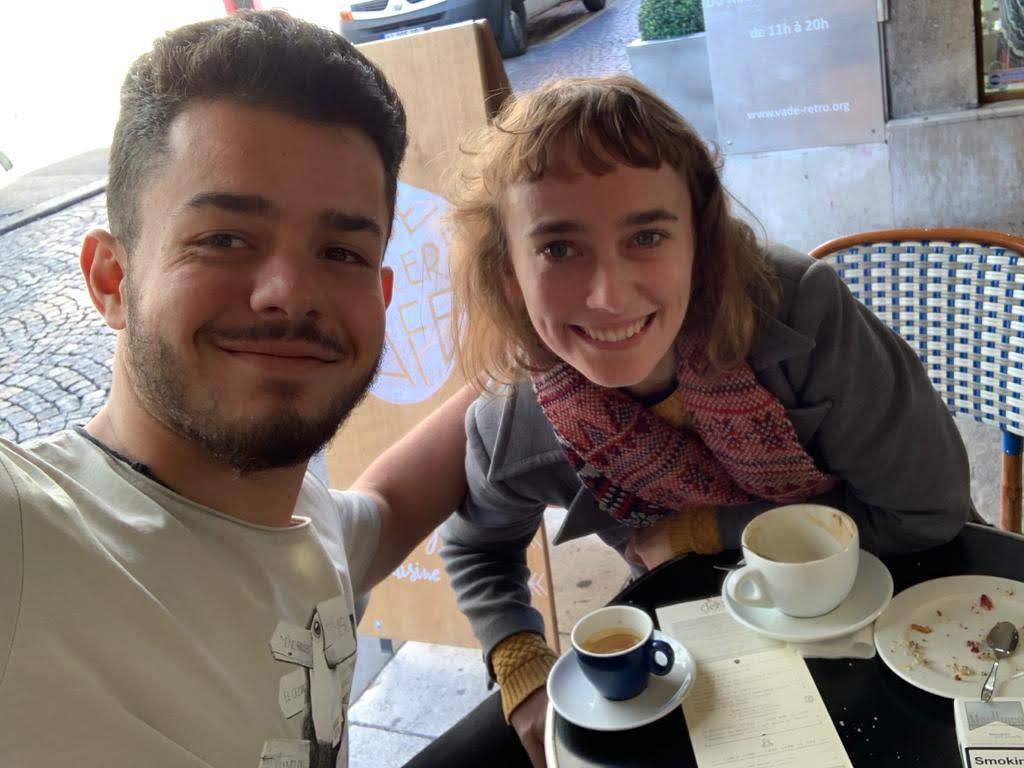
How did the collaboration with Abdulmonam Eassa began, and how did you decide what to do next?
We messaged each other, and he mentioned he would be coming to Paris, which is where I live. So we met in the fall of 2018, just a day or two after his arrival as a refugee. We had a coffee and talked. He told me about his experiences. I felt touched and honored to meet someone who lived through the horror of war which I was made familiar with as a distant observer. I had a lot of respect for his work as a young self-taught photojournalist. The second time we met, we talked about collaborating and the idea of a graphic novel popped up. We could talk about his memories: especially about all the stories that he was unable to cover as a photojournalist. And all the things that happened in between taking the pictures.
We would create a visual novel and incorporate his photos. To this day we are working on the scenario and the storyboards. We have a working title which is “The Laugh That Killed the Fear,” but it’ll probably have to change to something that’s a little easier to vocalize out loud, haha.
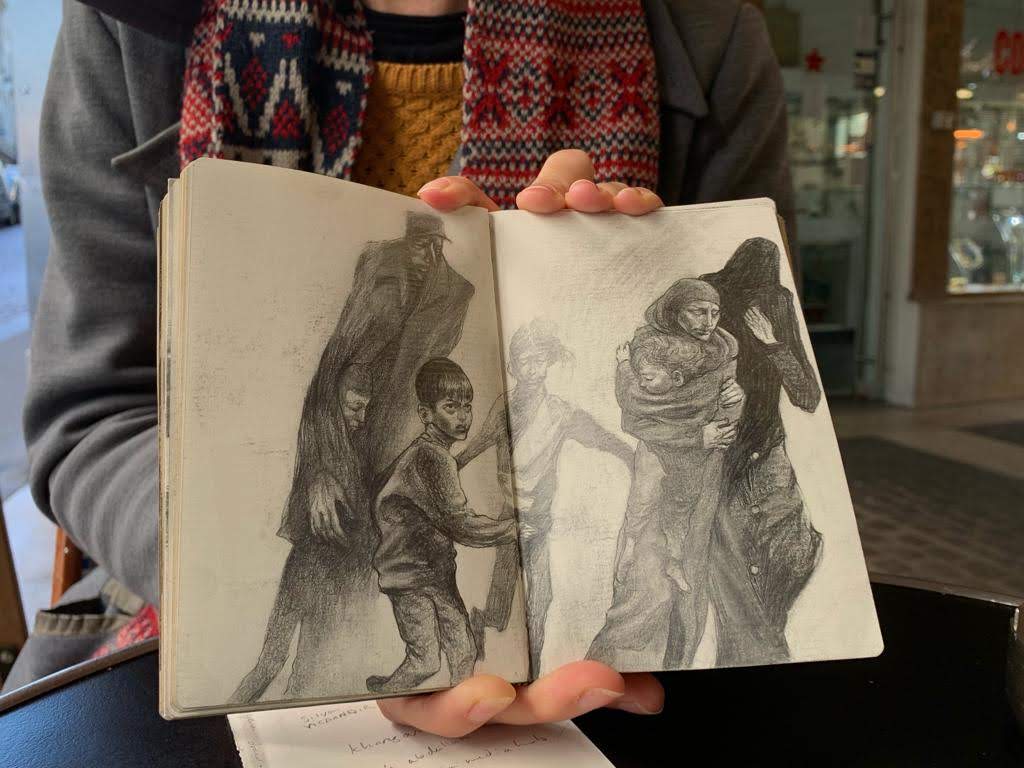
Can you tell us a little bit about your process of working on a graphic novel?
The book is based on diary entries and notes from Abdulmonam. We like to call the episodes “stories,” and Abdul has many of them. A friend helps us translate his writings from Arabic to English, then I rework them into a visual story while incorporating elements of my own. While drinking loads of coffee.
How will you publish it?
The book is made up of these story-chapters, which we aim to publish individually in a newspaper or magazine when we are a bit further along.
What do you hope to achieve with The Laugh That Killed the Fear?
We hope the stories can give people a true insight on what is happening in Syria. What life is like for a whole generation of young people who know nothing but war and destruction. We hope people pick up on the stories because it will be more personal and visually engaging than most news articles. We hope to connect people to the Syrian cause in a more profound way, an antidote to the growing fear of “strangers” and refugees. To let it be, just like #drawforpeace was, a manifest for peace.
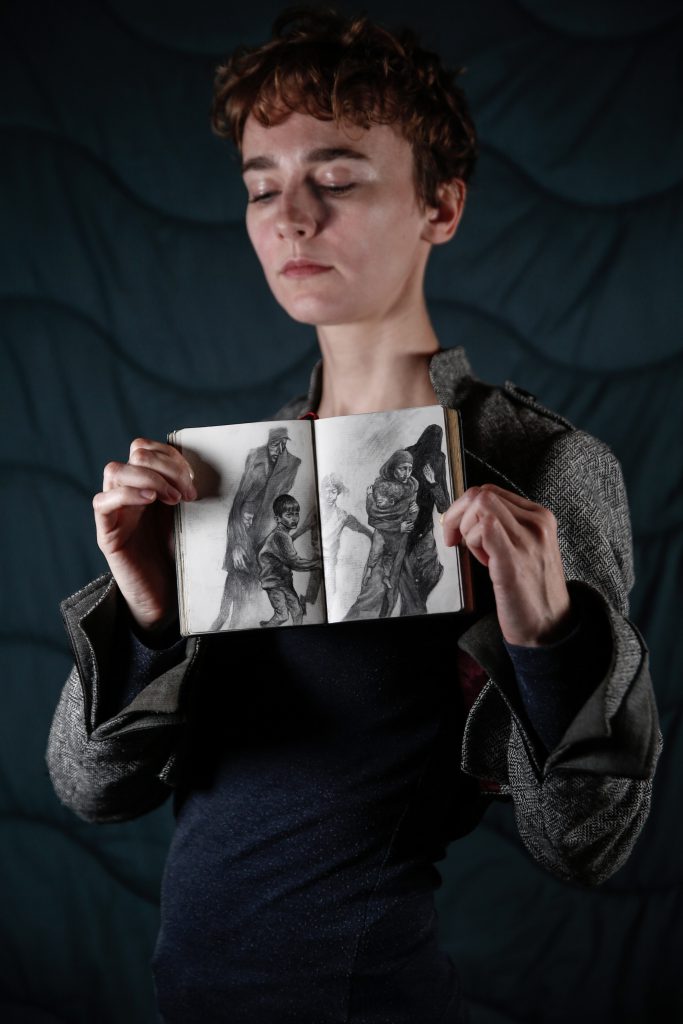
Do you have any advice you could share with other writers or artists who have a project they are passionate about?
Yes! I think it’s important to give yourself clear boundaries: choosing a format, material and style. But also a subject that you feel deeply connected to, something that will keep you motivated and inspired over a long period of time.
Then pour your soul into it. Create first for yourself, or for the people close to you. Don’t listen to the little voices in your head saying that what you make won’t make a difference. Yes, dream big, but don’t let it influence your work. Don’t try to guess what your audience will think of it: don’t ever try to please anybody. Be brave, be honest, break stuff.
Where can people go to learn more and support #DrawForPeace?
If you’d like to support our project, for now it is best to contact us directly through e-mail or social media channels.
Visit our websites to know more about us and please follow our Instagrams to stay up-to-date!
Thank you, Paperblanks!
Follow Abdulmonam
instagram.com/abdulmonam_eassa
abdulmonameassa.com

